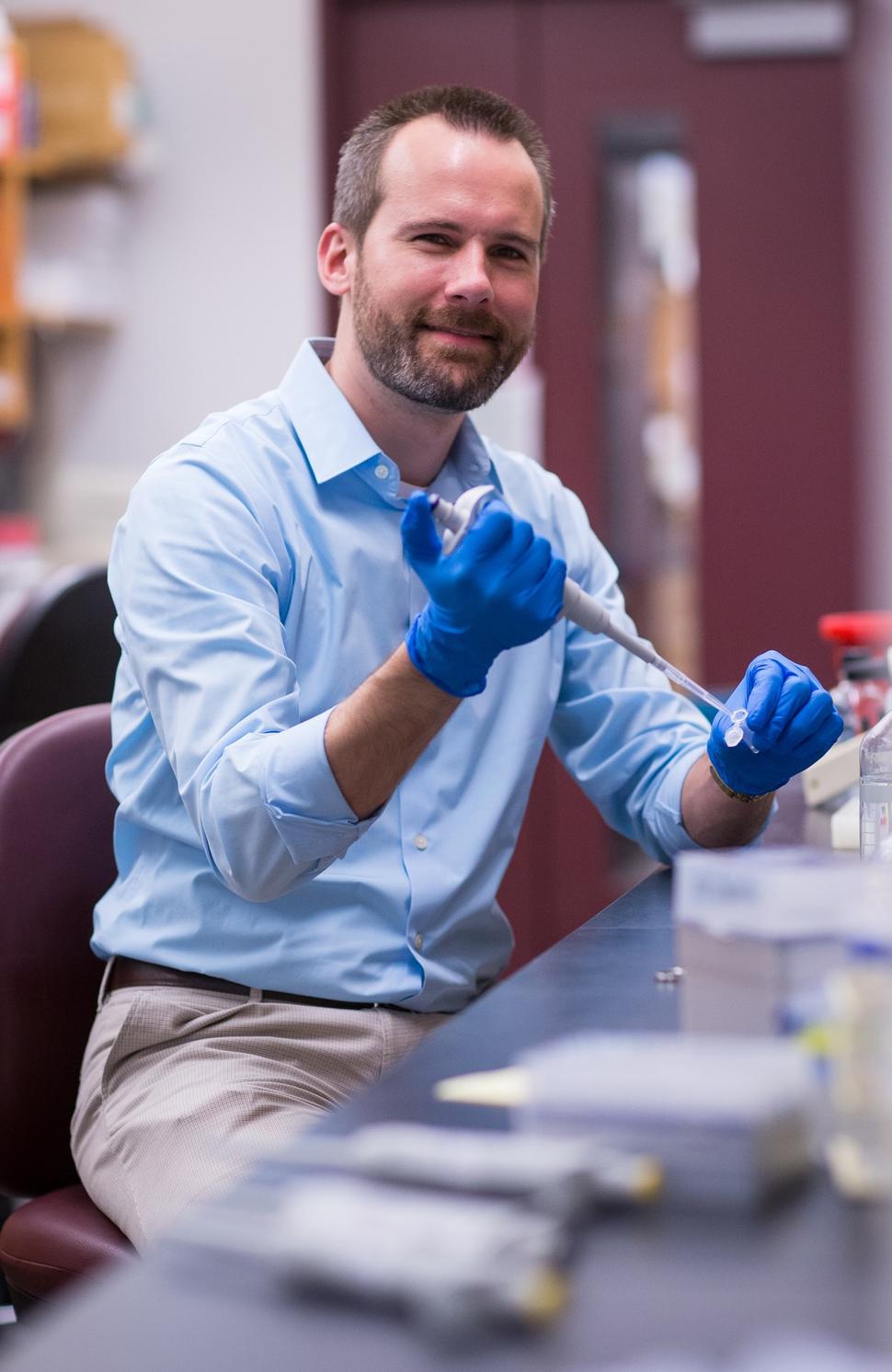Kevin Janes, Ph.D., is a CSBC investigator at the University of Virginia who enjoys skiing with his wife and two daughters. He’s hoping for a snowy winter, so he can apply his engineering knowledge to speeding down the slopes.
As an undergraduate, he studied biomedical engineering and Spanish. This led him to a Fulbright Scholarship research experience in Spain, where he showed that a biopolymer could be used to deliver chemotherapeutics. Now, he uses systems approaches to study breast cancer.
In this interview, he discusses mentorship, his CSBC research, and his views on cancer systems biology.
What was some of the best advice that you received during your career journey?
Initially, I was going into my postdoc with the mentality that I would transform who I was to show that I could compete and succeed in cancer cell biology just like everyone else in that lab. My thesis co-advisor strongly dissuaded me from doing that.
His advice was that you need to be yourself and bring your perspective to a project that is of interest to your postdoctoral lab. If that is successful, there’s no doubt about ownership over a project if you put your own stamp on that work.
This is also connected with another important piece of advice: Identify and do something that no one else can do but you.
Why is it important to train the next generation of scientists in cancer systems biology?
I strongly believe that newly innovative ideas will come from the next generation. There’s this conservatism that permeates in as you gain experience as an independent investigator and when you know too much. When you work with graduate students and postdoctoral fellows who don’t have that historical baggage, they’ll propose really crazy things.
The intersection of that out of the box perspective in combination with the realism and practicality from a more established investigator gives rise to innovative approaches that could be put into practice.
Why do you study breast cancer?
There’s a lot of information out there on breast tumors, so this type of cancer can be used for developing and testing systems approaches. Sequencing has been so extensive that we’re at saturation for what genomics alone can do, meaning more sequencing is not going to uncover more oncogenes and tumor suppressors.
Yet, there are subtypes of breast cancer that remain mysterious – they appear to be beyond the oncogenic insults or loss of tumor suppressors that were documented by sequencing.
My lab’s CSBC project focuses on the role of the human epidermal growth factor receptor 2 (HER2) in breast cancer. HER2 amplification defines one of the major subtypes of breast cancer; however, there remain open questions related to what precisely HER2 amplification is driving in cancer cells, how cancer cells respond or become resistant to HER2 targeted therapeutics, and more.
We’re tackling these types of questions from the perspective of tumor heterogeneity and focusing on the differences of single cells with active HER2.
Can you describe your Scientific Reports study about in situ 10-cell RNA sequencing?
For our CSBC studies, we need to measure, in a precise and reliable way, the cellular state of single cells that have active, chronic HER2 signaling.
The Scientific Reports paper laid the foundation for our project. It describes a method for measuring the transcriptomic state of small populations of cells taken immediately from the microenvironment wherein they reside. It’s important to preserve the regulatory state of cells and to analyze them within the context of their microenvironment.
Going forward, this method is essential for us to translate our findings from 3D spheroid cultures to animal models of HER2 and clinical cases of HER2 amplified breast cancer.
What is important for cancer systems biologists and the CSBC to think about moving forward?
It is important for cancer systems biology, if it’s going to stay as a vibrant field, to maintain its scientific diversity and inclusivity. You never know where the good ideas and approaches are going to come from. They could be brought in from other areas of research that might never have been applied to cancer systems biology before.
We as a field should always be welcoming to people who want to come in and work with us. It just creates a better scientific environment overall and I think it’s critically important for the types of problems and challenges that we’re tackling in our research.
